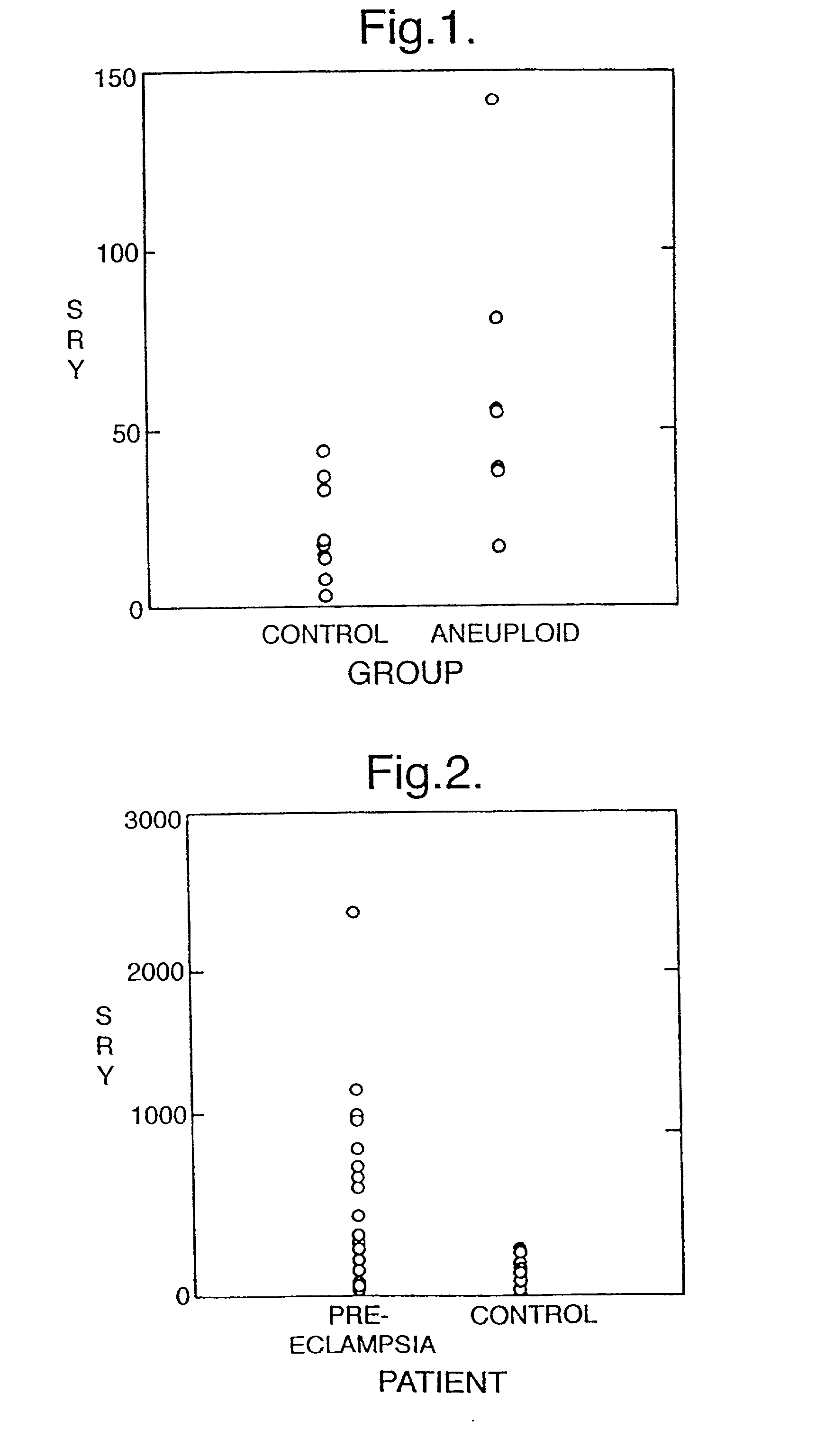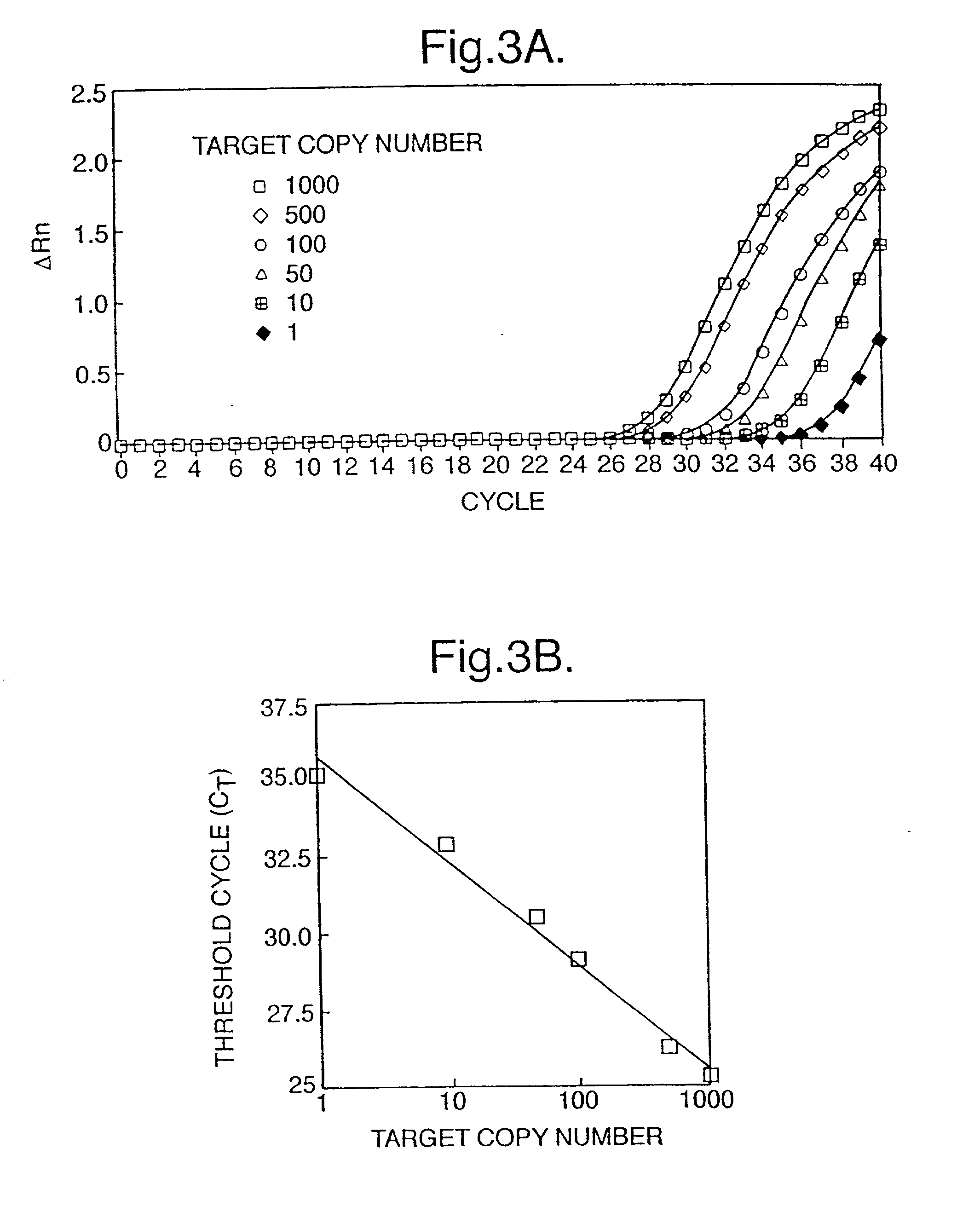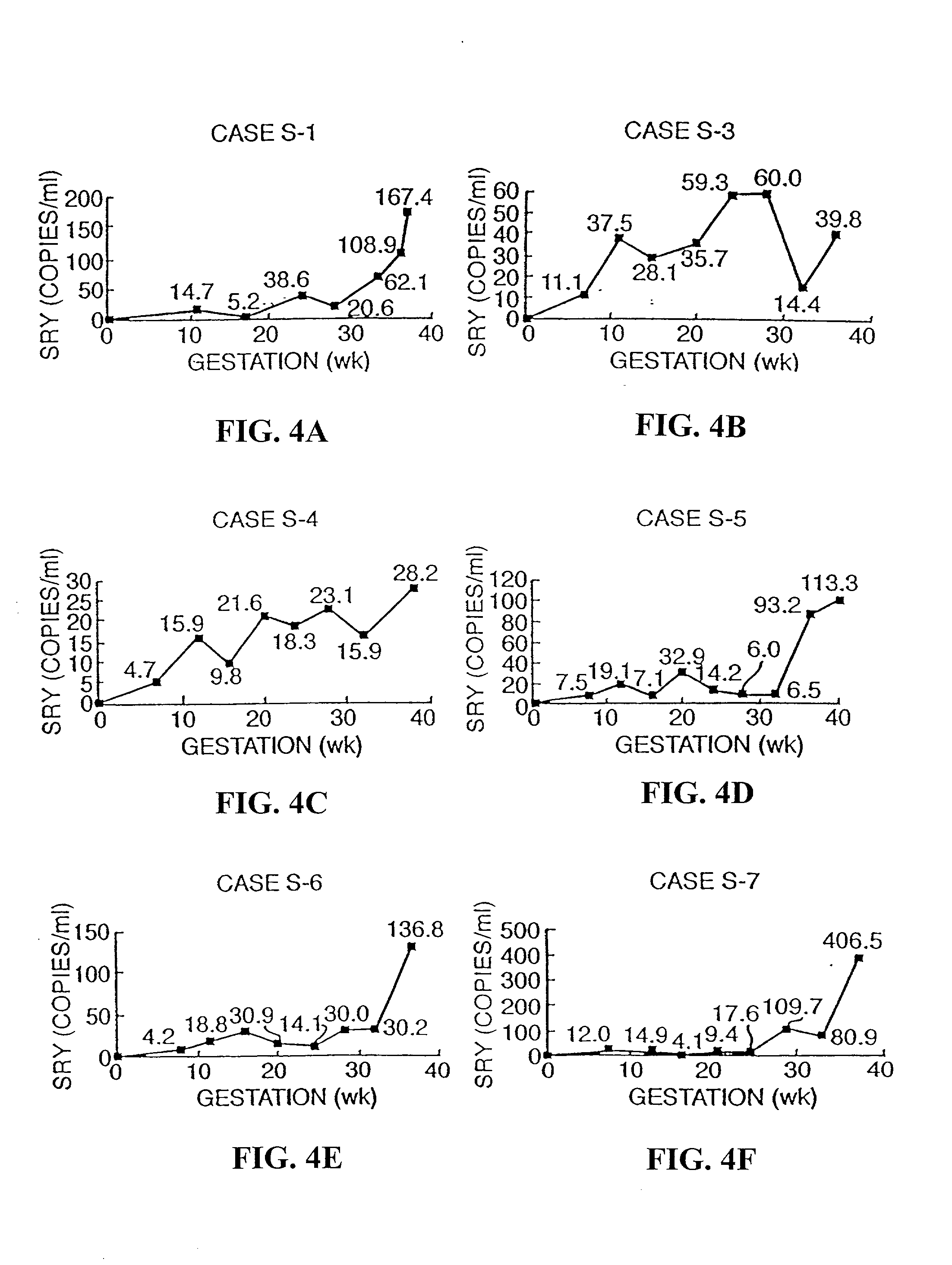Non-invasive prenatal diagnosis
a prenatal diagnosis and non-invasive technology, applied in the field of non-invasive prenatal diagnosis, can solve the problems of time-consuming and labor-intensive techniques, the risk of mother and pregnancy, and the need for expensive equipmen
- Summary
- Abstract
- Description
- Claims
- Application Information
AI Technical Summary
Benefits of technology
Problems solved by technology
Method used
Image
Examples
example 1
[0029] Analysis of Fetal DNA for Sex Determination
[0030] Patients
[0031] Pregnant women attending the Nuffield Department of Obstetrics & Gynaecology, John Radcliffe Hospital, Oxford were recruited prior to amniocentesis or delivery. Ethics approval of the project was obtained from the Central Oxfordshire Research Ethics Committee. Informed consent was sought in each case. Five to ten ml of maternal peripheral blood was collected into an EDTA and a plain tube. For women undergoing amniocentesis, maternal blood was always collected prior to the procedure and 10 ml of amniotic fluid was also collected for fetal sex determination. For women recruited just prior to delivery, fetal sex was noted at the time of delivery. Control blood samples were also obtained from 10 nonpregnant female subjects and further sample processing was as for specimens obtained from pregnant individuals.
[0032] Sample Preparation
[0033] Maternal blood samples were processed between 1 to 3 hours following venesecti...
example 2
[0045] Quantitative Analysis of Fetal DNA in Maternal Serum in Aneuploid Pregnancies
[0046] The prenatal screening and diagnosis of fetal chromosomal aneuploidies is an important part of modem obstetrical care. Due to the risks associated with invasive procedures such as amniocentesis and the impracticability of performing screening with invasive methods, much effort has been devoted to the development of non-invasive screening methods for fetal chromosomal aneuploidies. The two main non-invasive methods which have been developed are maternal serum biochemical screening and ultrasound examination for nuchal translucency. These methods are both associated with significant false-positive and false-negative rates.
[0047] The demonstration of fetal nucleated cells in maternal circulation offers a new source of fetal material for the noninvasive diagnosis of fetal chromosomal aneuploidies (Simpson et al 1993). By the use of fetal nucleated cell enrichment protocols, several groups have rep...
example 3
[0075] Non-invasive Prenatal Determination of Fetal RhD Status from Plasma of RhD-negative Pregnant Women
[0076] Introduction
[0077] The rhesus blood group system is important in transfusion and clinical medicine, being involved in hemolytic disease of the newborn, transfusion reactions and autoimmune hemolytic anemia. Despite the widespread use of rhesus immunoglobulin prophylaxis in rhesus D (RhD)negative mothers, rhesus isoimmunisation still occurs. In those cases where the father is heterozygous for RhD gene, there is a 50% chance that the fetus is RhD-positive and 50% chance that the fetus is RhDnegative. The prenatal determination of fetal RhD status in these cases is clinically useful because no further prenatal invasive testing or therapeutic manoeuvres are necessary if the fetus can be shown to be RhD-negative.
[0078] Advances towards this goal have been made possible recently through the cloning of the human RhD gene (Le Van Kim et al 1992) and the demonstration that RhD-nega...
PUM
| Property | Measurement | Unit |
|---|---|---|
| volume | aaaaa | aaaaa |
| volume | aaaaa | aaaaa |
| volume | aaaaa | aaaaa |
Abstract
Description
Claims
Application Information
 Login to View More
Login to View More - R&D
- Intellectual Property
- Life Sciences
- Materials
- Tech Scout
- Unparalleled Data Quality
- Higher Quality Content
- 60% Fewer Hallucinations
Browse by: Latest US Patents, China's latest patents, Technical Efficacy Thesaurus, Application Domain, Technology Topic, Popular Technical Reports.
© 2025 PatSnap. All rights reserved.Legal|Privacy policy|Modern Slavery Act Transparency Statement|Sitemap|About US| Contact US: help@patsnap.com



